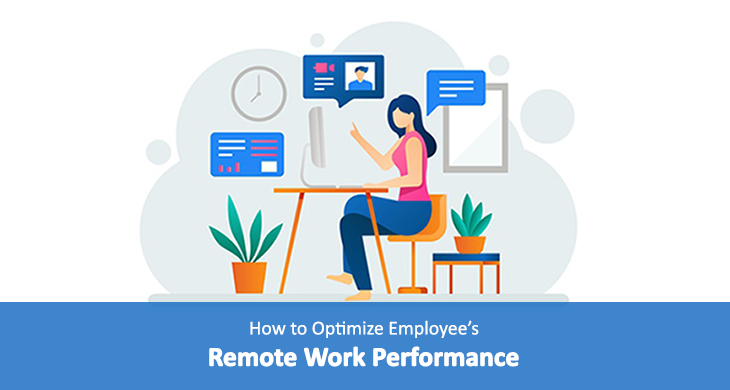A sign of the time, employers and employees alike enjoy a large degree of flexibility when it comes to remote workplaces. Remote work is particularly popular among the younger millennial workforce, who place a great deal of emphasis on a personal and professional balance. That said, remote work also poses a number of challenges, not the least of which is productivity. Employers and employees need their goals and tasks to remain aligned, particularly when working remotely.
This blog explores several ways to track and measure employee performance when working together at a distance.
- Goal-Based Tracking
- Frequent, Two-Way Communication
- Leveraging Employee Reviews
- Manage and Measure Performance Better
Let’s dive in
Table of Contents
Goal-Based Tracking
Using goals to track performance is one of the best ways for you to monitor and measure employee productivity, especially when working remotely. Goals offer guidance to employees, encouraging them to think constructively, to maximize their time, and to prioritize completion of critical projects.
You May Like:
Standard goal setting provides a uniform, concrete measure for employees to prove their value when it comes to performance reviews. Having unclear goals means employees are uncertain as to what is expected of them. This confusion will inevitably lead to reduced productivity. When setting goals, you should follow the SMART model, which encourages goals to be:
- Specific.
- Measurable.
- Achievable.
- Relevant.
- Time-bound.
This model will ensure remote teams know what the successful outcome of their efforts is, and what specific objectives need to be satisfied in order to get there. As a general rule, individual employee objectives should be in alignment with the goals of the larger organization. Employees should have a clear idea of how their work contributes to the company’s operations, profits, and customers. Taking into account their personal career goals will help employers maximize worker productivity.
Frequent, Two-Way Communication
Managers need to regularly touch base with their teams working remotely. This promotes visibility and ensures every team member has a clear idea of what is expected of them. Regular, consistent communication likewise allows employees to discuss any challenges or obstacles that may be impeding their productivity. Without the luxury of face-to-face interaction with your employees, consistent two-way communication is of the utmost importance.
Moreover, it needs to be encouraged more frequently. Managers should work on incorporating feedback as part of regular team communication. This type of proactivity will better prepare employees for constructive criticism or identify areas of improvement in anticipation of annual performance reviews.
Leveraging Employee Reviews
Annual reviews of employee performance are among the most reliable tools to track, measure, and adjust worker productivity. However, if not structured properly, they likely will not offer very accurate insights for the benefit of the employee and the employer alike. A structured review should focus on critical points and offer employees a specific direction on how to improve their performance.
You May Like: Helping Your Employees Adapt to Automation
The feedback garnered from these reviews should be utilized to outline future organizational and individual goals. With any remote worker, a performance review that depends on an in-office conversation will likely not work. Video conferencing, periodic and frequent reviews, and individual focus are very important when conducting reviews of remote employees.
How You Can Manage and Measure Performance Better
Visibility and alignment can be difficult to achieve when it comes to remote employee performance. In most cases, businesses will need to rely on the help of technology and software to better measure remote performance. There are many performance management tools that can help you organize all key performance data in one convenient location. Some of these tools help with increased organizational visibility, even for remote workers.
You May Like: How to Resolve Conflict in the Workplace
Integrated workflows and communication modules can help you track and measure employee performance effectively. Above all, the software you choose should communicate review points to employees with both clarity and transparency. Reviews are sensitive territory, and you don’t want to upset your workers unnecessarily. Keeping them properly informed is an essential part of tracking and measuring remote employee performance.
In the midst of the ongoing COVID-19 pandemic, most businesses are following the remote working model in order to stay operational. Remote working is one of the only options for businesses to maintain continuity during these times. This means there is an even greater emphasis on accurately, efficiently, and transparently managing remote employees and their performance.
